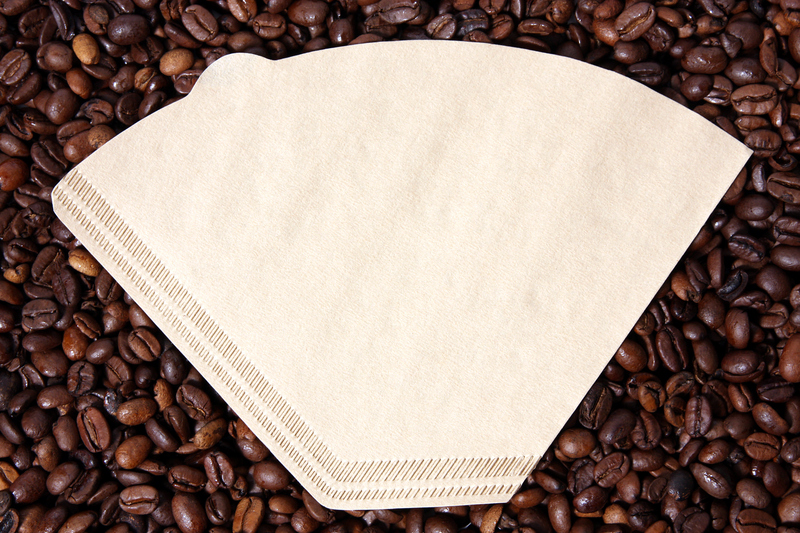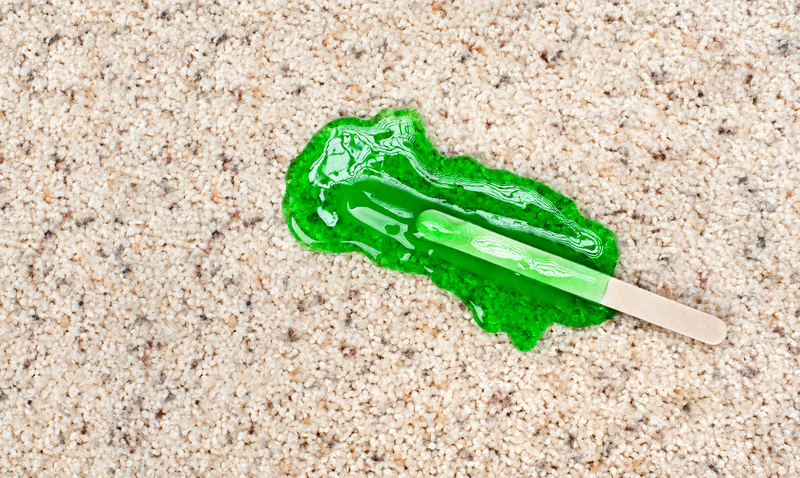Get the Most Out of Your Velvet Curtains with Proper Washing and Care
Posted on 18/05/2025
Get the Most Out of Your Velvet Curtains with Proper Washing and Care
Velvet curtains add an undeniable touch of luxury and sophistication to any space. Their lush texture, rich colors, and ability to block light make them a popular choice for homeowners and interior designers alike. However, to maintain their exquisite beauty and prolong their lifespan, it's essential to care for velvet curtains properly. In this comprehensive guide, we'll show you how to wash velvet curtains, address stains, maintain their texture, and ensure they continue to elevate your home's ambiance for years to come.
Table of Contents
- Why Proper Care for Velvet Curtains is Essential
- Identifying Different Types of Velvet Fabrics
- Basic Maintenance Tips for Velvet Curtains
- How to Wash Velvet Curtains: Step-by-Step Guide
- The Right Way to Dry Velvet Curtains
- Removing Stains from Velvet Curtains
- When to Seek Professional Cleaning for Velvet Curtains
- Proper Storage to Protect Velvet Curtains
- Frequently Asked Questions about Velvet Curtain Care
- Conclusion: Enjoy Beautiful Velvet Curtains for Years
Why Proper Care for Velvet Curtains is Essential
Velvet is an elegant and delicate fabric with a distinctive, plush pile that can easily be damaged if not treated with the right care. With proper cleaning, washing, and maintenance, your curtains will maintain their luster, color, and shape for much longer. Neglecting velvet curtain care can lead to:
- Loss of sheen and texture
- Permanent creases or crush marks
- Fading and discoloration
- Deterioration of the backing or lining
- Attracting dust, dirt, and allergens
By investing time in velvet curtain maintenance, you'll keep your window treatments vibrant, functional, and stunning for many years.
Identifying Different Types of Velvet Fabrics
Before you wash your velvet curtains, it's important to identify the type of velvet fabric. The cleaning method can vary significantly depending on the fiber content and weave. Here are the most common types:
- Cotton Velvet: Known for its smooth feel, natural fiber, and breathability. Prone to wrinkling, less resistant to crushing.
- Synthetic Velvet: Often made from polyester or microfiber, offering higher durability and better stain resistance than natural velvet.
- Silk Velvet: The most luxurious and delicate option, with a luminous sheen. Usually requires professional cleaning.
- Crushed Velvet: Features an intentionally crumpled appearance; care instructions may vary.
- Velveteen: A shorter pile fabric that resembles velvet, easier to clean but less plush.
Always check the care label attached to your curtains before beginning any cleaning process.
Basic Maintenance Tips for Velvet Curtains
1. Regular Dusting and Vacuuming
Over time, dust and debris naturally settle on luxurious fabrics like velvet. To keep your velvet drapes looking their best:
- Use a handheld vacuum with a soft brush attachment to gently remove surface dust.
- Always vacuum in the direction of the pile to avoid crushing the fabric.
- Lightly shake out the curtains, preferably outdoors, to remove loose dirt.
2. Avoid Direct Sunlight Exposure
Prolonged exposure to direct sunlight can cause velvet to fade and lose its softness. If possible:
- Choose a location that offers indirect light.
- Use a lining on your curtains for added protection.
- Rotate or periodically rehang curtains to distribute exposure evenly.
3. Address Spills and Stains Immediately
Accidents happen! The quicker you respond to spills, the easier it is to prevent permanent stains on your velvet curtains. Blot, don't rub, and follow our stain removal tips below.
How to Wash Velvet Curtains: Step-by-Step Guide
Not all velvet curtains can be machine washed. Depending on the product label and fabric type, you may need to hand-wash, machine-wash gently, or opt for dry cleaning. Follow these essential steps to wash your velvet curtains safely:
Step 1: Read the Manufacturer's Label
Before proceeding, inspect the care tag. If it says "Dry Clean Only," do not attempt to wash at home.
Step 2: Remove Dust and Debris
Thoroughly vacuum or shake out the curtains to remove loose dirt. This prevents dust from settling deeper into the pile during washing.
Step 3: Hand-Washing Velvet Curtains
- Fill a clean bathtub or large basin with cold or lukewarm water.
- Add a small amount of gentle, non-alkaline detergent (preferably made for delicates or woolens).
- Submerge the curtains, moving them gently to avoid excessive agitation.
- Let them soak for 5-10 minutes. Do not wring or twist.
- Rinse thoroughly with cold water until all soap residues are removed.
- Press out excess water carefully by pressing between clean towels.
Step 4: Machine Washing Velvet Curtains (If Allowed)
- Place curtains in a mesh laundry bag or pillowcase to protect the pile.
- Use a delicate or gentle cycle with cold water.
- Only use a mild detergent (avoid bleach or fabric softeners).
- Do not overload your machine; wash curtains individually if necessary.
*Note: If ever in doubt, default to hand-washing or professional cleaning.*
The Right Way to Dry Velvet Curtains
Velvet is sensitive to heat and should never be tumble dried. Incorrect drying can cause irreversible crushing, shrinkage, or distortion.
- Lay the curtains flat on a clean, dry towel and roll to absorb extra moisture.
- Unroll and reshape to their original size, smoothing out creases by hand.
- Allow them to air dry flat or hang them back up while still damp to minimize wrinkles. Avoid direct sunlight and heat sources.
- Do not iron velvet directly! If you must remove creases, use a steamer or hang the curtains in a steamy bathroom for a natural refresh.
Removing Stains from Velvet Curtains
Accidental spills and stains are inevitable, but with the right approach, you can save your velvet drapes from lasting blemishes. Here's how:
- Blot Immediately: Gently blot (do not rub) with a clean, dry cloth to absorb as much liquid as possible.
- Spot Clean: Use a mixture of mild dish soap and cold water. Dab the stain lightly with a sponge or cloth, working from the outside in.
- Rinse: Gently dab the area with a damp, clean cloth to remove any soap residue.
- Let It Dry: Pat with a dry towel and allow to air dry. Brush the pile gently with a soft, dry cloth or a specialized velvet brush once dry.
- Professional Help: For persistent or oily stains, consult a professional upholstery cleaner.
When to Seek Professional Cleaning for Velvet Curtains
Sometimes, professional cleaning is the safest and best solution. Consider dry cleaning:
- For silk or antique velvet curtains
- If the fabric label clearly states "Dry Clean Only"
- When dealing with extremely delicate embroidery, beading, or trim
- For hard-to-remove stains or accumulated grime after years of use
Professional upholstery cleaners have industrial equipment and expertise to clean, restore, and preserve fragile velvets without causing damage.
Proper Storage to Protect Velvet Curtains
If you're storing your curtains between seasons, use these strategies to prevent damage:
- Store in a cool, dry, breathable environment to minimize mold and mildew.
- Hang on a padded hanger or roll loosely (never fold sharply) to prevent creasing.
- Protect from dust with a cotton or muslin cover--avoid plastic bags, which trap moisture.
- Add lavender sachets or cedar chips for natural moth and pest protection.
Frequently Asked Questions about Velvet Curtain Care
1. Can I steam velvet curtains?
Yes--steaming is an excellent way to remove wrinkles and refresh the pile. Always use the lowest heat setting and steam from the underside or at a safe distance to avoid "crushing" the velvet nap.
2. Is it safe to iron velvet?
Avoid direct ironing, which can imprint the pile. If absolutely necessary, use a velvet board and iron on the reverse side, using a protective cloth between the iron and fabric.
3. How often should I wash velvet curtains?
Ideally, only wash velvet curtains when noticeably soiled or at the end of a season. Frequent washing can damage the fibers; regular dusting and spot-cleaning are usually sufficient.
4. What if my velvet curtains shrink after washing?
Shrinkage is a risk, especially with cotton velvet. Always wash with cold water, avoid wringing, and air dry flat. If shrinkage occurs, gently stretch the fabric while damp to restore shape.
5. Can I use a fabric refresher spray on velvet curtains?
Only use sprays specifically labeled safe for velvet or delicate fabrics. Always test on a hidden area first.
Conclusion: Enjoy Beautiful Velvet Curtains for Years
Velvet curtains are a beautiful investment for any home--resplendent in both appearance and function. With regular care, gentle washing, and smart storage habits, your velvet window treatments will continue to enrich your space for decades.
Remember to always check fabric labels, avoid harsh cleaning agents, and don't hesitate to enlist professional help for delicate or antique velvets. Your reward? Stunning, long-lasting velvet curtains that look as spectacular as the day you first hung them.
For more tips on curtain care and home decor, browse our related articles and guides!






